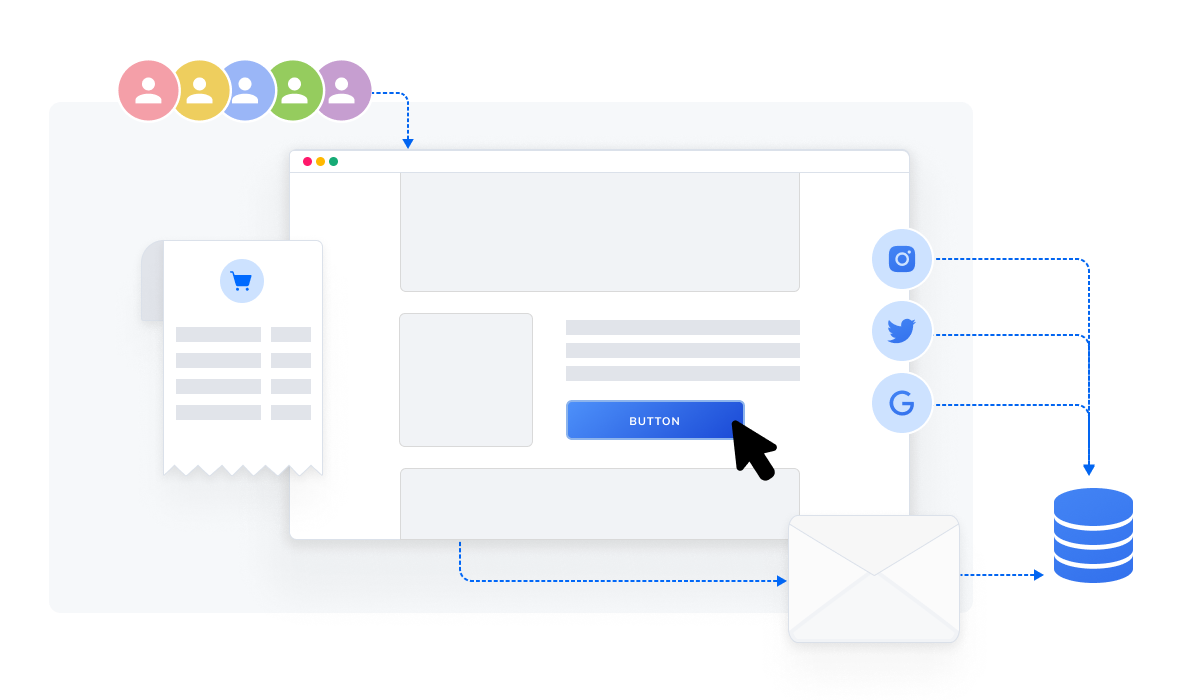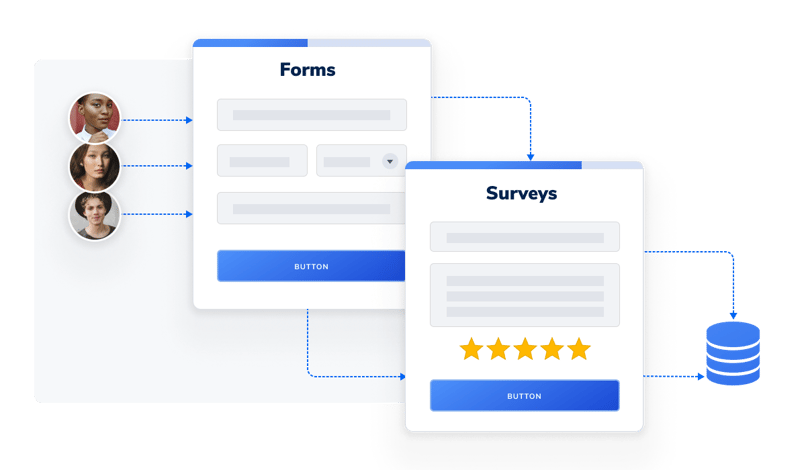Zero-Party and First-Party are two very different types of data that can help your company better understand your customers. Discover everything you need to know about these two data types in the following article.
In today’s digital age, it's vital to collect data from existing or prospective clients. This collected data provides the only method to generate tailored and personalized advertisements and communication strategies for your target group with an effective data collection technique enabling your messages to stand out from the crowd while increasing customer acceptance, awareness, and trust.
Both Zero and First Party Data play an equally important role in the collection of useful customer information. The following covers all the important aspects of successfully using this data. We also share our best practices for aligning your communication strategy with your target audience, so let’s get started!
What Are Zero-Party Data & First-Party Data?
Zero Party Data (ZPD)
Since 2020, the term Zero-Party Data rapidly gained importance, predominantly thanks to US market research firm Forrester Research. Forrester defines Zero-Party Data as data “which a customer intentionally and proactively shares with a brand”, meaning users explicitly provide this information. Customers actively choose to provide it because it provides a sense of control and a greater sense of security.
This sharing involves a two-way value exchange. Customers provide personal information and in return receive individualized offers. Since Zero-Party Data is collected directly from end users with their explicit consent, it increases trust in a brand while achieving greater data-sharing transparency.
Zero-Party Data allows you to reap numerous benefits:
Organizations are able to leverage the use of Zero-Party data to understand what their customers need to then create personalized offers. Furthermore, these insights enable your company to develop long-term relationships with your existing and prospective customers.
Examples of Zero-Party data:
- Forms,
- surveys,
- questionnaires,
- quizzes,
- Profile settings,
- Loyalty programmes,
- Newsletter subscriptions and
- other collected data provided directly by users.

First-Party Data (1P data)
This data is implicitly provided by the users and is based on user behavior and is collected more passively through user interactions.
You can collect First-Party Data directly via integrated systems and platforms such as websites, apps, or social media pages. Customer Data Platforms (CDP) or Customer Relationship Management Systems (CRM) also provide effective methods of obtaining 1P data.
The collection of this data can be outsourced with no decrease in accuracy and reliability, however, data security ought to remain your number one priority. If you can keep this data collection process in-house you ensure this security.
Examples of first-party data:
- Website engagement,
- App usage,
- Previous online purchases (purchase history),
- Social media interactions,
- Email engagements (link clicks)
- etc.

What’s The Difference Between Zero- & First-Party Data?
The main difference between these two data types is the origin of the data and how it is used. It is also affected by users' consent, among other things.
Both Zero-Party and First-Party Data provide valuable insights into customer behavior, but Zero-Party Data delivers more precise information about individual customers through their voluntary presentation. First-Party data on the other hand, offers insights into more general trends about all individuals using a specific platform or service, thanks to its aggregated characteristics.
Benefits & Risks Of Collecting Zero-Party Data
Zero-Party data is an important part of any data warehouse. It is the most reliable, actionable, valuable information your company can gather on its customers.
This type of data collection enables your company to interact directly with your clients, establishing a foundation of trust. Investing in Zero-Party Data collection is a win-win for all parties involved:
You receive high-quality insights on customers with more accurate and actionable information than with other data collection methods. At the same time, your customers stay in control of the data they share with you and can benefit from a more personalized user experience.
Why Is It Getting More And More Difficult For Companies To Generate This Data?
One of the biggest challenges of gaining access to Zero-Party Data is that user trust is extremely low. It's a problem that impacts all businesses across the globe and is not confined to one industry. To change this, your company must demonstrate a commitment to transparency, and respect for customer privacy. You also have to create a positive user experience.
Users will only provide their data if they trust your company. Discounts, tailored marketing, product recommendations, or other benefits in return can also help.
 How Can Your Company Use This Data?
How Can Your Company Use This Data?
Finding the right balance is the key to using Zero-Party and First-Party Data effectively:
Providing a high level of customization without invading users' privacy?
If you gather First & Zero-Party Data in an ethical and transparent way, you can use it for the following purposes:
- Creating compelling customer profiles
- Boosting sales
- Accelerating emotional understanding
- Faster responses to customer feedback
Creating Compelling Customer Profiles
The best customer profile isn't one that’s stuffed with tons of customer data. It's the one with high-value, actionable data. Purchase intent ("I will make a purchase in two months") and the buyer persona ("I am shopping for a friend") data are powerful tools for customer segmentation.
Boosting Sales
If your marketers have the right information, they can seamlessly lead customers and prospective buyers to relevant products and services. ZPD micro-experiences, such as a quiz on product recommendations, can guide your customers more quickly to their desired destination. What's more, you can tailor your retargeting campaigns more accurately.
Accelerating Emotional Understanding
Customer loyalty is more than just exchanging points and rewards. On the contrary, it's an emotional connection between a customer and their chosen brand. For marketing purposes, you can use ZPD to acquire emotional information such as their mindset. This allows you to more quickly determine how your customers perceive your brand.
Faster Responses To Customer Feedback
Your clients – especially loyal ones – want to feel like the brand they buy from really cares about them. Your marketing department can use zero-party data to get feedback from your most loyal clients. By doing so, you can show them that you value their input on all topics – from the product to the user experience.
All in all, your company can only benefit from knowing the difference between zero-party data and first-party data. Your company can make informed decisions when developing marketing strategies tailored to specific target groups, for example.
And if you use both data together, you can gain valuable insights into your target audience. If you don’t use either of these data types effectively, you’ll stay in the dark.
Do you want to collect zero- and first-party data and use it in a compliant way to provide your customers with a better user experience?
Cutting-edge software, such as Guided Selling solutions, can help you accomplish this. Providers like Neocom can generate this data for you without a hassle because they already ask your customers about their particular preferences during the consulting process.